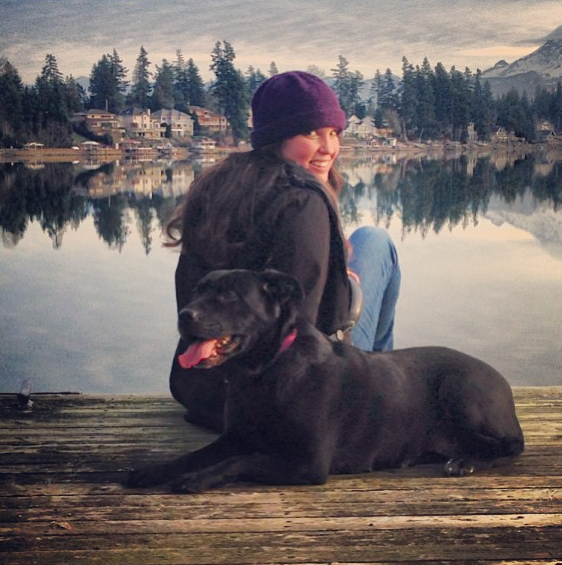[This is an excerpt from Price It Like Picasso – our Auction Blueprint. If you haven’t read it yet, you really should…]
“A thing long expected, takes the form of the
unexpected, when at last it comes”
Mark Twain
There are three key reasons an online business is an amazing opportunity. Let me outline them:
#1 Infancy
The Internet is in its infancy. It’s a baby. It’s an enormous, amazing, talented youngster. It basically started in 1995, with a user-group that was relatively small, but grew quickly and continues to grow at an astonishing pace. If you think the online universe is fully populated, or all the apples have been picked, then you’re really wrong. This thing is just getting started, and there is plenty of room on the bus for you, and your new business. Here are three metaphors that might help you understand the magnitude of this opportunity.
A Whole New World: Imagine it is 15 years after Columbus discovered the new world. Manhattan is filled with forest, not skyscrapers. Boston has a few Indian tee-pees erected, and looks more like a KOA campground, than a thriving city. Treasure Island in the Caribbean has never had anyone step foot on it, and it is waiting for someone to come and lay on its beaches. But now imagine you can travel to the new world for free, without leaving your home in England, without it costing you anything. You don’t have to quit your job. You can go to the new world on evenings and weekends. You can find your piece of it, and build your new kingdom, then, magically, with the click of a mouse you can be back in time for dinner, or to tuck your kids into bed. It’s the new world, minus the risk of crossing the ocean.
Head West Young Man: Imagine the Internet is like “The Wild West”, and this is fifteen years after the Lewis & Clark expedition. The Napa Valley doesn’t have any vineyards yet; want to plant some? Anaheim doesn’t have any orange groves, let alone Disneyland, interested? Las Vegas is not even on the map. San Francisco? What’s that? And instead of jumping on a wagon train, buying a horse, kissing your family good-bye and leaving everything behind, you get to click into it during evenings and weekends. You can travel west, stake your claim, and work the land. Then with the click of a mouse, be back in time for church, or to leave for work on time at 7:15.
There Is Gold In Them There hills: Imagine it is fifteen years after the Gold Rush started. Those nice folks at Sutter’s Mill in Coloma saw shiny gold in the bottom of the creek, and the world changed. But you don’t have to move to California or buy a physical shovel or pick. You can jump into the creek, work all day picking up your gold nuggets, and return home in the blink of an eye. Get your feet wet every evening for two hours without sacrificing anything. Bust your pick on the weekends, and never worry about getting bonked on the head by thieves or claim jumpers.
Is it really that big of an opportunity? Like the new world? Like the wild west? Like the gold rush? It’s bigger – financially – way bigger. Get the picture? This thing is big, and it’s just starting out.
#2 Accessibility
The Internet has changed how business is done. Why? Because anything online, (aka digital), like digital products, and processes, and tools have something called “near zero marginal cost.” That means if IBM builds an amazing tool for selling something, it costs them almost nothing to add another user. They know that and that user can be you. And there are millions of companies that are building systems and processes, and tools. So guess what happens? There is a classic ‘race to the bottom’. Where one company makes something and charges $99, then another company makes it and figures out how to charge $9.99, then a third company figures out how to make it and give it away for free to enhance another part of their business. What does that mean for you? It means people start offering you tools, and processes, and products for free, or nearly free, and although that might not make any sense to you, it makes sense to them, and their accountants. Score.
Remember when you used to pay for America Online? Or Prodigy? What happened? Netscape came along and offered the same service for free, and figured out how to make money doing it. They ‘demonetized’ that product. Remember when door-to-door salesmen used to sell Encyclopedias? Then Microsoft introduced Encarta on CDROM? Then Wikipedia started? That was an industry worth hundreds of millions of dollars a year – and it got vaporized by someone using the principles of ‘near zero marginal cost’. That same situation is occurring over and over throughout every corner of the current Internet. You are getting amazing tools offered to you, all for free. The only thing you have to do is learn to use them.
I recently heard Mark Suster, a very successful entrepreneur, share at a Stanford lecture. It was a great lecture. He explained that this first business cost him about 2 million to build, in terms of the tools and systems necessary to run it. His next business cost him just a few hundred thousand to basically build the same thing. Today, he could build the same business for just a few thousand dollars. Why? Because the tools and systems that used to cost a lot of money are now offered for free, or nearly free because of this magical near zero marginal cost.
Hey guess what, I don’t go to Stanford, and I don’t live in California. I watched the lecture for free on their website. So let me recap the situation for you: I attended a Stanford lecture for free, listening to a guru guy talk about near zero marginal cost. I didn’t pay anything for the lecture. I didn’t get on a plane and travel to Palo Alto. Stanford is happy, the guru is happy, I’m happy, and now you’re happy. Was that possible fifteen years ago? No way!
The online marketplace is offering you more free products than ever before, and making more money off of you than ever before. How is this possible?
I realize this will sound like I’m contradicting myself, given the fact that I just shared all about how things are getting ‘free’. Yet there is an amazing flip side to the free coin. While things are getting free people are spending more money online than ever before. But it’s not just people spending money online, its companies, and churches, and the government. It’s commerce at the broadest level. Google is not going broke, yet it offers almost all its services for free.
#3 Scalability
All of us have experienced going from a small town to a big one and back again. It’s fun to be ‘awed’ by the differences. Some of us grew up in a big city and are most comfortable there; some grew up in a small town and are most comfortable there. When you’re a small town kid, the big city is a weird and wonderful place.
We were small town kids in Northern California, so San Francisco was the big city for us. One year (before the Internet) we were newly married, and we got into photography. So for our anniversary we went to San Francisco to visit the camera stores and try to find a lens that we were interested in. Wow, we spent a whole day visiting all the camera stores, and pawnshops. Our little town back home didn’t even have 1 camera shop. San Francisco had more than we could visit in one day. There were so many options, so many cool shops, and so many things to see. It was like a wild goose chase in a giant maze. We had a blast. I’ll never forget driving to one pawnshop and as we got closer, we realized it was in a really rough part of town. Suddenly we realized maybe this was dangerous, we got nervous, but it made it all the more fun. We even debated whether or not we should stop and go in, but we did, and it turned out fine. I’ll never forget that shopping experience. It was with my amazing spouse, we had so much fun, and we had never indulged in a hobby that much before. Guess where I’m going with this story. Fast-forward a few years. Camera enthusiasts have endless options online now. The whole industry has migrated to an e-commerce existence. The options we found in San Francisco are like a drop in the ocean compared to the options we could find online.
Something weird happens to topics and hobbies when you have a billion people online. Topics that used to be so marginal and ‘out-there’ now have huge forums and communities that you can participate in. Imagine an ant that is the size of a dinosaur. Imagine a dinosaur the size of Texas.
So the online marketplace is growing to an unfathomable size and scope, and with it, information, products, and opportunities associated with very small topics, or niches, are growing at this rate as well. Your ‘thing’ just got put on steroids. Your hobbyist group of 4 local friends just got expanded to the size of a packed out Wrigley Field. Do you know how many people want to buy a coke at Wrigley Field? A lot. Sell coke. Small things have become big, and big things have become utterly unrecognizable. If you’re interested in selling, this is the arena for you.
But you probably already figured this out if you’ve been online for any length of time. You searched for your hobby, and had your mind blown away. It changed you forever. Great.
Conclusion
Now the question is simple. Can you turn that little hobby, that craft love affair, that passion, into a profitable business? These three factors, infancy, accessibility, and scalability, all add up to one truth: You can do this! You can do it from your home, and you can do it cheaply. The barriers have fallen, and the opportunities really do exist. It’s a whole new world.
Our auction system is designed to help you learn one part of the online selling puzzle. It’s not the total solution, but it is one key part. If you can consistently run a successful and profitable online auction, then you can do something that most other online sellers cannot. Having that tool in your toolbox will help you for years to come, and serve as a great onramp to bigger and better selling strategies. And the cool part, the really awesome part, is that the process you have to go through to create a successful auction business will require you to lay the groundwork properly for long-term success. In other words, it’s a great place to stake your claim.











